The UK number plate system. A brief history
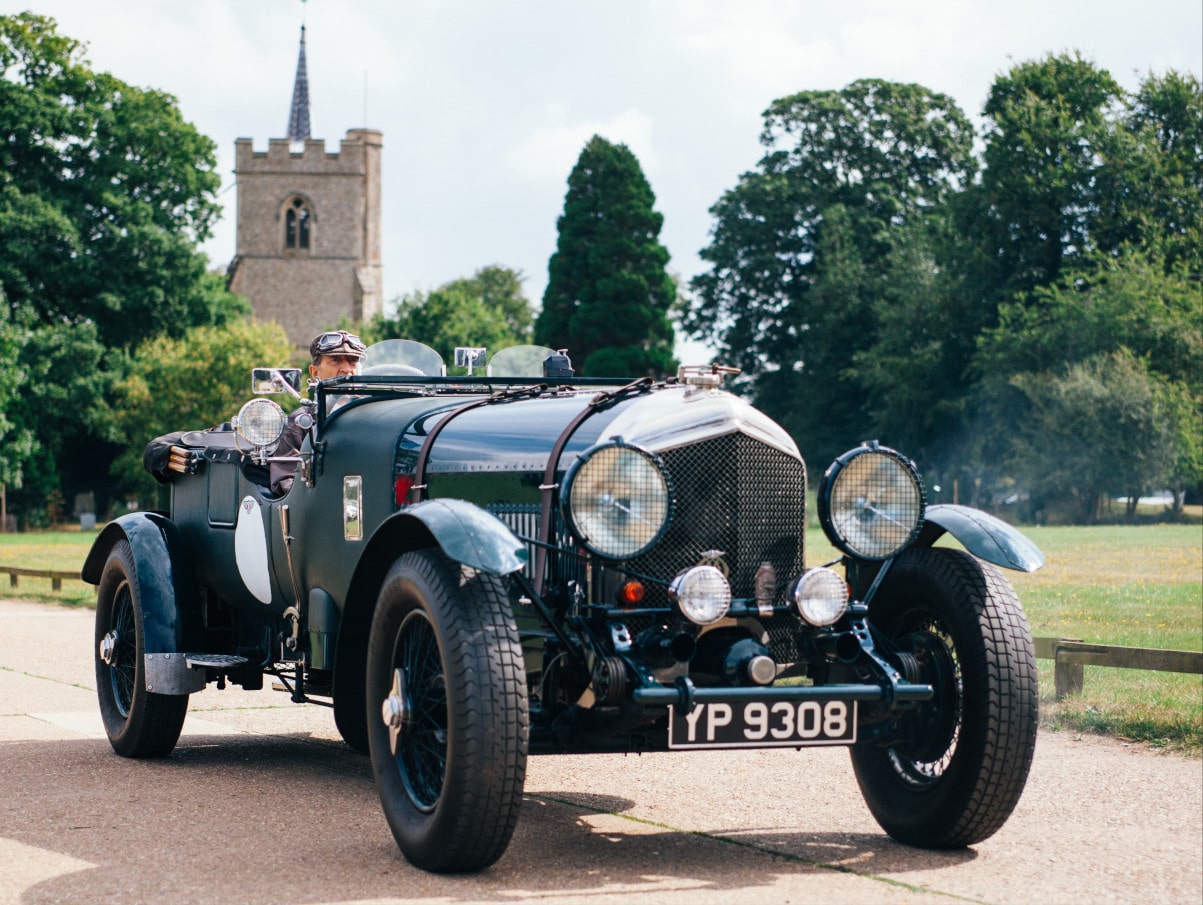
Unique vehicle registration marks are issued by our government for the purpose of identifying a vehicle, therefore we have to adhere to certain formats and styles set by the DVLA. It’s very important that you don’t rearrange letters or numbers, or mis-space or alter them, so that they’re hard to read on your number plates, because if you do so, you could be fined up to £1,000 and your car will fail its MOT test. You can read more about the legal requirements of displaying a number plate here.
Another important law that people have to consider when buying a number relates to the age of their vehicle. The DVLA stipulates that you can not make a vehicle look newer that it actually is by using it’s number plate (i.e using a number plate with a newer age identifier than the vehicle). The reason for this is to stop fraudsters from mis-selling vehicles to unsuspecting buyers. Buyers often wait to register their new vehicles until a new age identifier is released by the DVLA on 1st March and 1st September every year so that their vehicle looks as new as possible.
We have written a guide to the history of vehicle registration marks. This article however should give you enough basic information to become a number plate pro!
The UK number plate system was first introduced through the “Motor Car Act 1903”. This Act stipulated that each vehicle must be registered with its local council to be issued with a unique registration number and made it an offence to be in a vehicle on a public highway without one.
‘A1’ was debatably the first registration mark to be issued in London and was claimed by Earl Russell who allegedly camped out overnight to ensure he was the first in line. These are now known as ‘Dateless Registrations’ and were issued in sequence, relating to their geographical area until a new style of registration was introduced in 1963.
Registration Types
Dateless registrations
These are the most desirable style of registration due to their age, and are generally the most expensive. They were issued from 1903 - 1963 and don’t carry an age identifier, which means they can be assigned to any aged vehicle suitable to take part in a transfer. They consist of one group of letters and one group of numbers (or vice versa), they exclude the letters ‘I’, ‘Q’ and ‘Z’ and the numbers never start with ‘0’.
Suffix registrations
These were issued between 1963 - 1983 and were the first registrations to hold an age identifier. They consist of 3 letters, proceed with a group of numbers between 1 and 999, then follow with one letter (which identifies the vehicle’s age). Suffix registrations exclude the letters ‘I’, ‘Q’ or ‘Z’ and don’t use ‘O’ or ‘U’ as age identifiers.
Prefix registrations
These were released between 1983 - 2001 and are the opposite of Suffix registrations, in that they hold the age identifier at the beginning in the form of one letter, proceed with numbers between 1 and 999, then end with three letters. They exclude the letters ‘I’, ‘Q’ and ‘Z’ and don’t use ‘O’ or ‘U’ as age identifiers.
Current style registrations
These registrations were introduced by the DVLA in September 2001 and will continue to be periodically released until 28th of February 2051. They always contain 7 digits which start with two letters, proceed with two numbers (which identifies the vehicle’s age), and end with three letters. Current style registrations exclude the letters ‘I’ and ‘Q’, and ‘Z’ can only appear in the last three letters. These registrations are released twice a year and are issued between 1st March - 31st August, and 1st September - 28th February.
Northern Ireland registrations
These registrations were issued in 1903 to vehicles registered in Northern Ireland and, like Dateless registrations, don’t have age identifiers so can therefore be assigned to any aged vehicle suitable to take part in a transfer. They consist of two or three letters which always include ‘I’ or ‘Z’, and proceed with numbers between 1 and 9999 (or vice versa).
In 2014, the DVLNI and DVLA merged to allow the easy transfer of Northern Irish registrations to mainland UK vehicles and vice versa. This allowed for quicker, easier and cheaper transfers which then promoted the sale of all registrations. Northern Irish registrations are now a more affordable alternative to Dateless registrations to hide the age of your vehicle.
Identifying Plate Styles
Using these flowcharts it should be possible for anybody to identify what type of registration style each plate is!
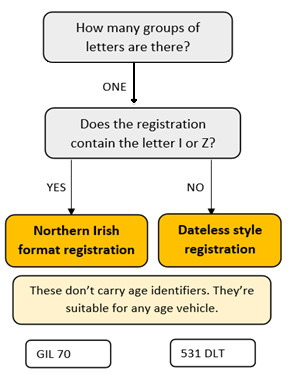
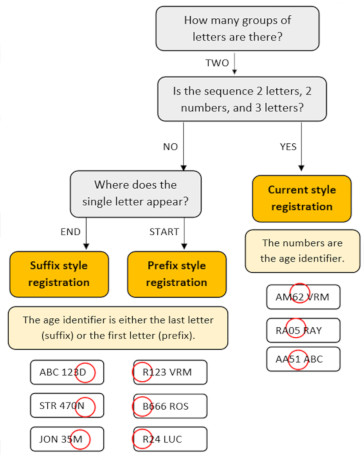
Age Lookup Table
Now that you’re a master at identifying the different styles of registrations, you can find out the age of a particular number plate by looking up it’s age identifier in this table:
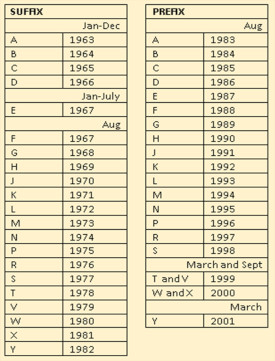
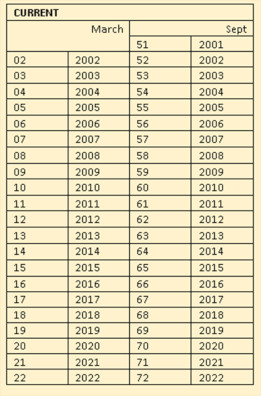
Latest articles
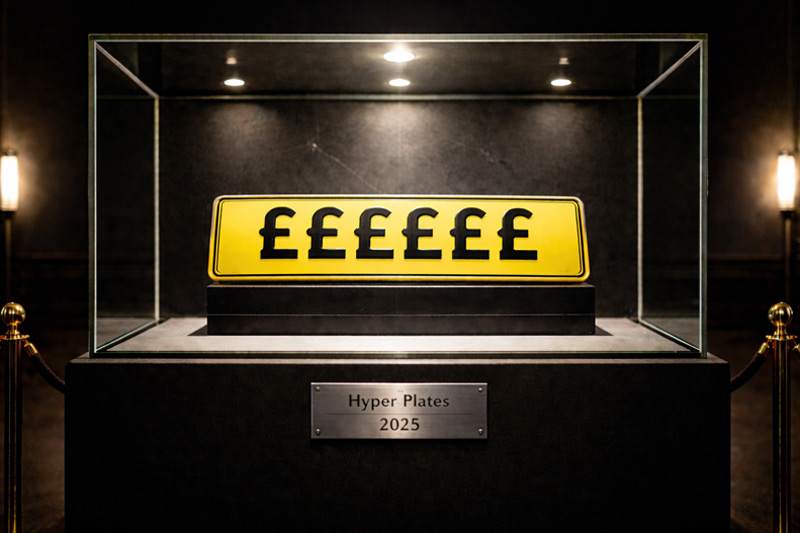
The Rise of the Hyper Plate
View article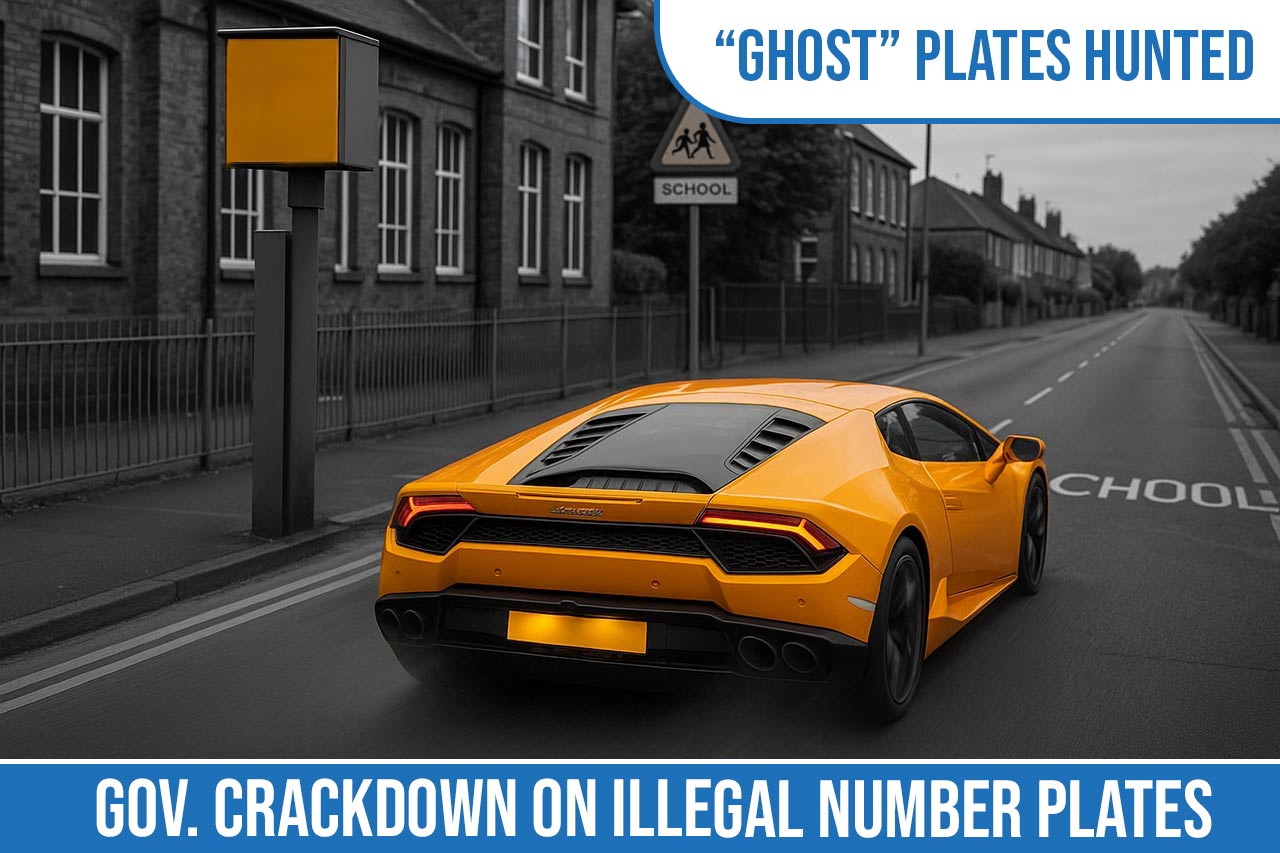
New Government Number Plate Proposals Risk Fueling Illegal supply
View article
Private Number Plates: The Perfect Christmas Gift
View article